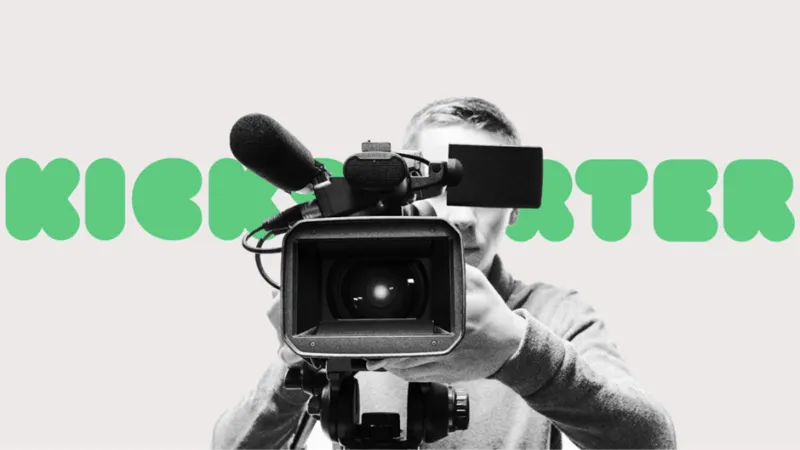
Product-market fit is like finding a match on Tinder. It involves identifying a target audience within a market willing to engage with the product under the proposed terms. Let’s discover how to find PMF fast and cost-effectively.
There's a common startup story: "We have a great idea! Let's make it and everyone will want it." But often, when it's done and offered, nobody shows interest. This failure indicates a lack of product-market fit.
Product-market fit means offering a product that people want or need. But it's just one part of selling a product. You also need a solid marketing strategy, customer feedback, and good distribution channels.
Let’s see Duamentes Global Alliance's approach, helping startups in 35 countries, who are facing time and money constraints while finding product-market fit.
RECOMMENDED FOR YOU

Mentoring the Next Generation: Building Teacher Leaders for Lasting Impact
Team SR
Jan 2, 2026
Step 1: Analyzing Product Development Background
The first step in finding Product-Market Fit (PMF) is to thoroughly understand the assets of the company and its product. These assets could include ideas, technology, or past attempts at selling products, including both successes and failures in various markets. This information is important as it defines the current situation and provides guidance for experts in planning the next steps.
During this step, it's essential to gather all available information accessible to the product team and carefully assess each detail to comprehend the product's current position. This involves examining the product being developed, identifying the target audience, and determining whether it has been tested and what the resulting data reveals. At this stage, it becomes apparent what aspects are known and understood and which areas require further research.
For example, it's not uncommon for companies to face situations where they conclude, "We've tried this, and it didn't work." It's imperative to accurately ascertain why previous attempts were unsuccessful. Sometimes, the core idea may be sound, but the chosen marketing channel was ineffective, or the product feature was not tailored to the correct audience. Therefore, it's essential to gain a thorough understanding of what did or didn't work, including all relevant details, from the outset. Failure to do so could lead to confusion and miscommunication later on.
Founders often believe they possess comprehensive knowledge of their product and market – after all, they wouldn't be founders otherwise. However, it's important to delineate precisely what they truly understand and then introduce new insights. For instance, in Duamentes work with startup Loona, although it was initially positioned as a sleep application, it was observed that users were primarily engaging with it as a form of entertainment to pass the time with engaging activities.
Step 2: Market Analysis
Understanding the market landscape may entail analyzing multiple countries or regions simultaneously or focusing on specific geographical areas, depending primarily on the company's objectives, resources, and current level of market knowledge.
Founders often launch startups in regions they are familiar with, such as their home country or places they have lived for an extended period, or simply in the USA. While this approach may succeed at times, it's not guaranteed. For instance, the USA might prove to be a highly competitive market ("red ocean"), and the current region might not be the optimal fit for the product due to various factors, such as the absence of a target audience or insufficient purchasing power. In such cases, it could be more advantageous to explore other markets. The company needs to identify the optimal location, which begins with formulating hypotheses.
Formulating Hypotheses
Hypotheses are formulated based on team's knowledge and external insights from partners, such as Duamentes, leveraging their knowledge base with thousands of projects and insights. At this stage, it is crucial to determine the list of countries for inclusion in the analysis.
Consider Restrictions
The goal here is to identify any significant systemic barriers, legal and compliance issues, or customer-related factors, such as cultural nuances. Another Duamentes example, a cryptocurrency company considering entering a country that recently banned all crypto-related activities would face significant challenges. Similarly, a product requiring manufacturing may encounter high import taxes in certain countries, unless produced domestically, in which case the tax rate could be significantly lower. Such considerations may influence the priority of potential markets.
Highly Competitive Market
Entering a market saturated with similar solutions or products is challenging, as consumers may be reluctant to switch due to habit or other factors. It often requires outspending the marketing budgets of existing competitors.
While entering such a market isn't always impossible, it's essential to weigh the costs and benefits. For instance, a company with a substantial marketing budget may choose to compete in a highly competitive market or explore less competitive markets, such as those in Africa.
Here's another example: a company providing financial solutions for B2B considered offering a "buy now, pay later" product for purchasing goods in a marketplace. Duamentes aimed to identify quickly accessible marketplaces, such as those for selling construction materials. By targeting underserved industries in the UK with communication and offering them the product, they validated Product-Market Fit, which facilitated securing a new investment round.
Step 3: Defining the Value Proposition
At this step, the team must formulate assumptions grounded in their knowledge, expertise, market analysis, and experience, pondering questions such as "What potential product could we offer?" and "Who do we believe the target audience might be?"
It's crucial to recognize that decision-making can occur at multiple levels, whether in B2B or B2C scenarios. The user might not necessarily be the buyer; for example, one individual might utilize the product while another makes the purchasing decision. This dynamic can manifest in procurement systems, where the user and purchaser occupy distinct roles, or in situations like couples jointly deciding on purchases, with differing product preferences for each.
Considering the Target Audience
At this stage, it's essential to acknowledge that the chosen target audience and segments are merely hypotheses; they are assumptions until proven otherwise. This is where structured interviews come into play. These interviews are typically comprehensive and divided into three parts.
Examining the Target Audience
The initial phase delves into understanding the target audience—who they are, their roles, the tools they currently use, and their level of satisfaction or dissatisfaction with them. During this phase, information should be gathered indirectly to gauge the potential need for the offered product without directly discussing the product itself.
Product Discovery and Purchasing Journey
As you explore the individual's interactions with similar products, inquire about their product discovery and purchasing journey—when, where, and why they made the purchase. This data is invaluable for shaping distribution strategy going forward. You should delve into the products the target audience is familiar with—where they encountered advertisements, if they recall them, or if they were recommended by someone. If so, who recommended it, and under what circumstances? Was it in social media groups or elsewhere online? All of this information is crucial.
Product Testing
This type of testing is not conventional; it's a blend of testing and sales. At this stage, feedback on usability is not necessarily required, as usability testing is not the primary focus. What's important here is understanding whether the person is interested in what we're demonstrating or not, and demonstration is key. Simply discussing the product won't suffice; it needs to be demonstrated. This could be done through a presentation, a PDF, a prototype website, or a landing page showcasing the product.
For example, if it's a website, it's better to remain silent during the test, as usually, the person opens the website on their computer and explores it themselves, and it is needed to gather feedback. Or, if it's a presentation, and you are testing it, the salesperson leads the sales process by showing the presentation and commenting on it, and then you should collect feedback. However, this feedback should not be in the format of a report outlining improvements; it should focus on whether they would buy it or not.
When product-market fit is found, it indicates that company has successfully aligned the target audience and positioned the product in a manner that prompts the client to be immediately inclined to purchase. They're essentially prepared to provide payment straight away, or in the case of a more complex product, they may even offer contacts of the decision-makers within their company who are responsible for making the purchase. At this point, it's crucial to understand this alignment.
Iterative Approach
Experience has shown that immediate results are unlikely to emerge from the first interview or attempt. The approach involves adapting and refining the product description, value proposition, features, presentation, and more after each meeting with a potential client. This iterative process persists until confirmation is found within the target audience segment, as observed by Duamentes experts.
After each interaction, you should evaluate feedback. If aligned, refine the value proposition, adjusting based on insights into pain points. This iterative process leads to an offering that comprehensively meets needs, enhancing marketing and sales effectiveness.
If interactions with the target audience fail to elicit a response, it may not signal a flaw in the product, but rather an incorrect target audience. Revisiting the market evaluation stage to redefine the target audience is essential. If success remains elusive, it suggests initial market choices were incorrect and need reassessment. If this persists, it may be time to consider the viability of the idea. Typically, by this stage, the team has enough knowledge to identify a pivot idea.
At this stage, it is considered to prepare standard testing methods, like banners or sales presentations. This signifies the readiness to scale, allocate marketing budgets, or deploy a company’s sales team with a clear profile and message tailored to the target audience, or proceed with product launch.
It might seem like a long-time project, even frustrating at times, but Duamentes experience shows that this process usually takes between 1.5 to 3 months, which is much faster and more cost-effective than any other method.


 Follow us
Follow us Follow us
Follow us













